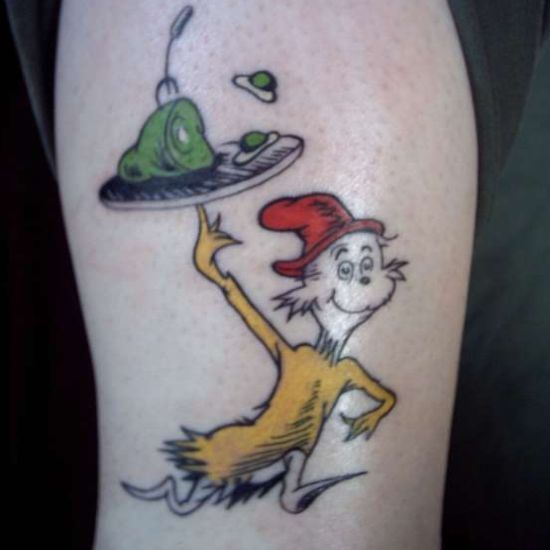Archive for February, 2013
Error Doesn’t Matter, Trial Does
 If you want to learn, to really learn, experiment.
If you want to learn, to really learn, experiment.
But I’m not talking about elaborate experiments; I’m talking about crude ones. Not simple ones, crude ones.
We were taught the best experiments maximize learning, but that’s dead wrong. The best experiments are fast, and the best way to be fast is to minimize the investment.
In the name of speed, don’t maximize learning, minimize the investment.
Let’s get right to it. One of the best tricks to minimize investment is to minimize learning – learning per experiment, that is. Define learning narrowly, design the minimum experiment, and run the trial. Learning per trial is low, but learning per month skyrockets because the number of trials per month skyrockets. But it gets better. There’s an interesting learning exponential at work. The first trial informs the second which shapes the third. But instead of three units of learning, it’s cubic. And minimizing learning doesn’t just half the time to run a trial, it reduces it by 100 or more. It’s earning to the hundredth power.
Another way to minimize investment is to minimize resolution. Don’t think nanometers, think thumbs up, thumbs down. Design the trial so the coarsest measuring stick gives an immediate and unambiguous response. There’s no investment in expensive measurement gear and no time invested in interpretation of results. Think sledgehammer to the forehead.
A third way to minimize investment is to evaluate relative differences. The best example is the simple, yet powerful, A-B test . Run two configurations, decide which is better, and run quickly in the direction of goodness. No need to fret about how much better, just sprint toward it. The same goes for trial 1 versus trial 2 comparisons. Here’s the tricky algorithm: If trial 2 is better, do more of that. And the good news applies here too – the learning exponential is still in play. Better to the hundredth power, in record time.
I don’t care what norms you have to bend or what rules you have to break. If you do one thing, run more trials.
But don’t take my word for it. Dr. Seuss had it right:
And I would run them in a boat!
And I would run them with a goat…
And I will run them in the rain.
And in the dark. And on a train.
And in a car. And in a tree.
They are so good so good you see!
Innovation Eats Itself
 We all want more innovation, though sometimes we’re not sure why. Turns out, the why important.
We all want more innovation, though sometimes we’re not sure why. Turns out, the why important.
We want to be more innovative. That’s a good vision statement, but it’s not actionable. There are lots of ways to be innovative, and it’s vitally important to figure out the best flavor. Why do you want to be more innovative?
We want to be more innovative to grow sales. Okay, that’s a step closer, but not actionable. There are many ways to grow sales. For example, the best and fastest way to sell more units is to reduce the price by half. Is that what you want? Why do you want to grow sales?
We want to be more innovative to grow sales so we can grow profits. Closer than ever, but we’ve got to dig in and create a plan.
First, let’s begin with the end in mind. We’ve got to decide how we’ll judge success. How much do we want to grow profits? Double, you say? Good – that’s clear and measurable. I like it. When will we double profits? In four years, you say? Another good answer – clear and measureable. How much money can we spend to hit the goal? $5 million over four years. And does that incremental spending count against the profit target? Yes, year five must double this year’s profits plus $5 million.
Now that we know the what, let’s put together the how. Let’s start with geography. Will we focus on increasing profits in our existing first world markets? Will we build out our fledgling developing markets? Will we create new third world markets? Each market has different tastes, cultures, languages, infrastructure requirements, and ability to pay. And because of this, each requires markedly different innovations, skill sets, and working relationships. This decision must be made now if we’re to put together the right innovation team and organizational structure.
Now that we’ve decided on geography, will we do product innovation or business model innovation? If we do product innovation, do we want to extend existing product lines, supplement them with new product lines, or replace them altogether with new ones? Based on our geography decision, do we want to improve existing functionality, create new functionality, or reduce cost by 80% of while retaining 80% of existing functionality?
If we want to do business model innovation, that’s big medicine. It will require we throw away some of the stuff that has made us successful. And it will touch almost everyone. If we’re going to take that on, the CEO must take a heavy hand.
For simplicity, I described a straightforward, linear process where the whys are clearly defined and measurable and there’s sequential flow into a step-wise process to define the how. But it practice, there’s nothing simple or linear about the process. At best there’s overwhelming ambiguity around why, what, and when, and at worst, there’s visceral disagreement. And worse, with 0% clarity and an absent definition of success, there are several passionate factions with fully built-out plans that they know will work.
In truth, figuring out what innovation means and making it happen is a clustered-jumbled path where whats inform whys, whys transfigure hows, which, in turn, boomerang back to morph the whats. It’s circular, recursive, and difficult.
Innovation creates things that are novel, useful, and successful. Novel means different, different means change, and change is scary. Useful is contextual – useful to whom and how will they use it? – and requires judgment. (Innovations don’t yet exist, so innovation efforts must move forward on predicted usefulness.) And successful is toughest of all because on top of predicted usefulness sit many other facets of newness that must come together in a predicted way, all of which can be verified only after the fact.
Innovation is a different animal altogether, almost like it eats itself. Just think – the most successful innovations come at the expense of what’s been successful.
Engineering Will Carry the Day
 Engineering is more important than manufacturing – without engineering there is nothing to make, and engineering is more important than marketing – without it there is nothing to market.
Engineering is more important than manufacturing – without engineering there is nothing to make, and engineering is more important than marketing – without it there is nothing to market.
If I could choose my competitive advantage, it would be an unreasonably strong engineering team.
Ideas have no value unless they’re morphed into winning products, and that’s what engineering does. Technology has no value unless it’s twisted into killer products. Guess who does that?
We have fully built out methodologies for marketing, finance, and general management, each with all the necessary logic and matching toolsets, and manufacturing has lean. But there is no such thing for engineering. Stress analysis or thermal modeling? Built a prototype or do more thinking? Plastic or aluminum? Use an existing technology or invent a new one? What new technology should be invented? Launch the new product as it stands or improve product robustness? How is product robustness improved? Will the new product meet the specification? How will you know? Will it hit the cost target? Will it be manufacturable? Good luck scripting all that.
A comprehensive, step-by-step program for engineering is not possible.
Lean says process drives process, but that’s not right. The product dictates to the factory, and engineers dictate the product. The factory looks as it does because the product demands it, and the product looks as it does because engineers said so.
I’d rather have a product that is difficult to make but works great rather than one that jumps together but works poorly.
And what of innovation? The rhetoric says everyone innovates, but that’s just a nice story that helps everyone feel good. Some innovations are more equal than others. The most important innovations create the killer products, and the most important innovators are the ones that create them – the engineers.
Engineering as a cost center is a race to the bottom; engineering as a market creator will set you free.
The only question: How are you going to create a magical engineering team that changes the game?

 Mike Shipulski
Mike Shipulski